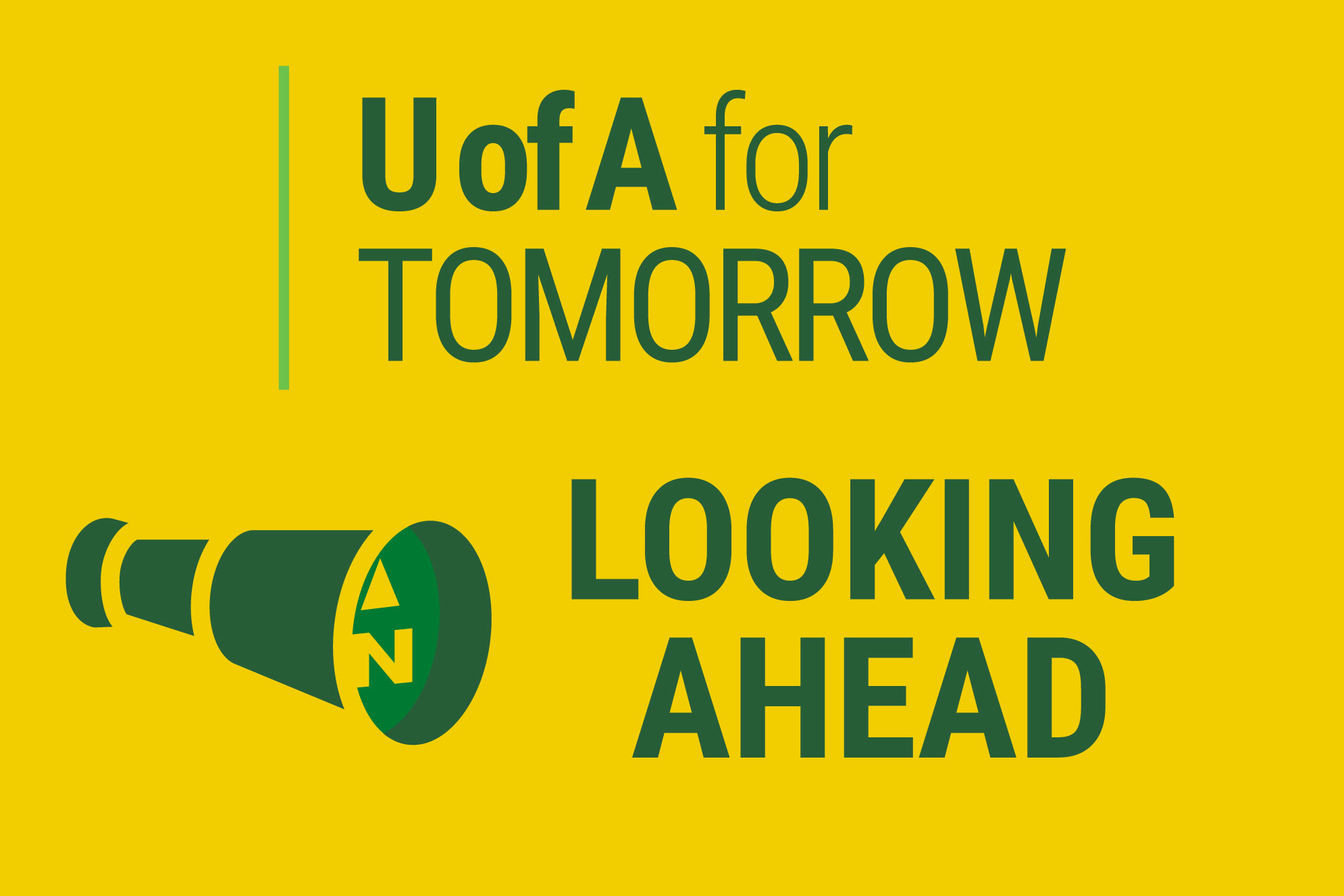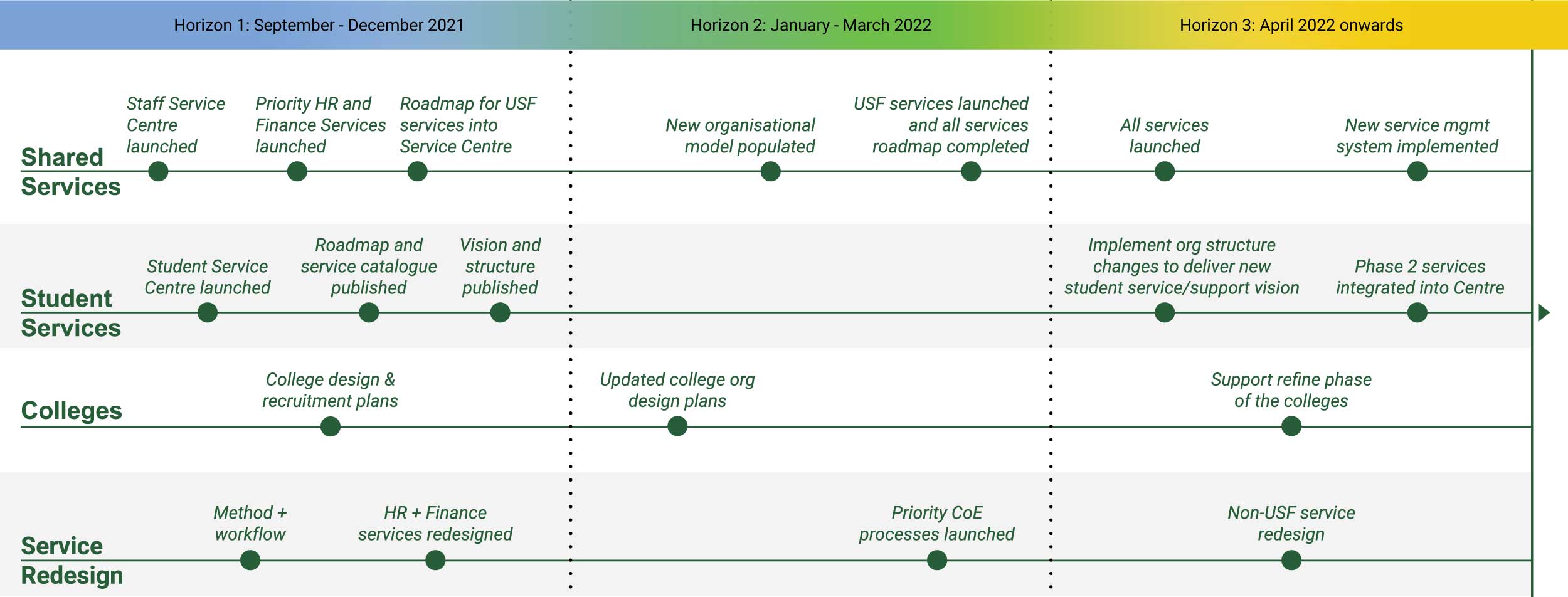Looking ahead at the central support services
Todd Gilchrist - 14 October 2021

This is the second article in the looking ahead series. Please read part one for information on what's ahead for the administrative workstreams. (This article updated Thursday, October 14, at 2:45 p.m.)
Since launching the U of A for Tomorrow (UAT) initiative in the spring of 2020 in response to unprecedented reductions in government funding, the university and its community have experienced significant change. Portfolios have been—and continue to be—restructured, staff and student service centres introduced, new positions and units created, and through it all, we've been working remotely through a pandemic.
In order to achieve our goals and strengthen the university's core teaching, research, and community engagement mission as well as enrich the student experience and create financial sustainability for the future, the university has developed and introduced a new operating model. A hybrid of centralized and decentralized services to promote consistency, avoid duplication, and support a university-wide service culture, this model changes how we deliver services and get work done more effectively and efficiently.
Looking ahead
To implement this new model, the Service Excellence Transformation (SET) team has been working diligently with administrative staff and faculty from across the university to restructure the university's administrative services and structures; the project is expected to wrap up by March 31, 2022. As I mentioned in my article last week, I want ton provide you with an overview of the upcoming transitions, activities, and milestones within three separate time frames:
- Horizon 1 - by December 2021
- Horizon 2 - by March 2022 | End of the SET program
- Horizon 3 - April 2022 + | Ongoing operations beyond SET
This article will focus on the movement through each horizon by the central support services. If you missed my first article in this series on the administrative workstreams, you can review it here.)
In addition to restructuring administrative functions at the university, SET is leading the design and delivery of four central support initiatives to ensure the operating model can be successfully implemented. This article covers the establishment of a shared services function within the Vice-President (University Services and Finance) portfolio, the development of a new Student Service Centre, introduction of the colleges, and the redesigning of services.

Here are the major activities and upcoming milestones for each of the central support services.
Shared Services and the Staff Service Centre
Relocating transactional activities into a new Shared Services unit has been a critical component of the SET program; it is pivotal to the new operating model and to ongoing, sustainable operations. After launching in July, the Staff Service Centre (the primary entry point for employees' administrative queries) within Shared Services has been growing its workforce and increasing its service footprint. Over the coming period it will continue these activities. During Horizon 1, the procurement transactional processing that is currently completed in the faculties, departments, and units will be transferred into the Shared Services unit. This will be a major undertaking to determine the current effort associated with this activity and to ensure that support is provided to all units that no longer have internal support. The transition roadmap will be developed in Horizon 1 and the transfer of services will continue throughout Horizon 2 and into Horizon 3.
Student Services and the Student Service Centre
The new Student Service Centre was launched in August, representing a shift to a more integrated service model for students. The remaining activities in the student services stream will occur in Horizon 1 with the conclusion of the visioning work, the development of a new service model, and the organizational redesign of the four student service units: the Office of the Registrar (RO), University of Alberta International (UAI), the Faculty of Graduate Studies and Research (FGSR), and the Office of the Dean of Students (DoS). Implementation of these new designs will be implemented in Horizon 3.
College Design and Implementation
The three colleges are key to implementing the operating model. They serve as integrators and accelerators, creating economies of scale and reducing the administrative burden borne by faculties and departments. Horizon 1 will see the college design and recruitment plans created with the College Deans and Provost. In Horizon 2, the College Deans will collaborate with Faculty Deans, adjust and finalize the designs, and then implement them. In Horizon 3, activities will be monitored to review the efficacy and performance of the new college model and to make any subsequent adjustments as needed.
Service Redesign
The redesigning of services is essential to the initial adoption of the new operating model and will continue to be required as the university moves forward. Through both Horizon 1 and 2, the Service Redesign group will continue to create improved processes for adoption across most streams with the initial focus on HR, finance, and procurement, to be followed by external engagement, research administration, and student services; IT processes were previously redesigned based on an earlier service review and redesign. During Horizon 2, SET will begin transitioning work to the Service Innovation Team within Shared Services to ensure that ongoing improvements are continuously facilitated through efficient knowledge and resource transfer.
Case study: Building from scratch
As a foundational component of the new model, the Shared Services unit launched on July 26 with phase one of its offerings: HR Services and the new Staff Service Centre. This is just the beginning for Shared Services. Eventually, a range of common services will be provided centrally to drive long-term efficiencies and cost savings through self-serve options, service innovation, and efficient triaging of requests.
In just two months, the unit hired and trained nearly 70 staff members to build a knowledgeable, approachable team of problem solvers. Almost the entire team is composed of internal staff, hired through a transparent and equitable application process, helping to preserve much of the university's extraordinary talent and providing new, specialized career pathways. By drawing from the university's current staff, onboarding has moved quickly.
It will take time for the new Shared Services unit to reach its full potential. Setting up a brand new unit within tight timelines doesn't happen without challenges. The team is balancing day-to-day operational activities with new service offerings, temporary systems, onboarding, and training. They are and will continue to make improvements as the unit grows and evolves. The team is committed to being agile, flexible, and responsive on an ongoing basis to meet the needs of the university community.
The ultimate success of Shared Services relies heavily on close connection and ongoing conversations with faculties/units, staff, partners, and Centres of Expertise. I am confident that over time Shared Services will become a powerful driver of service excellence, information, and process innovation.
Managing expectations
As we continue to make great strides in transitioning to new business processes, services, policies, and roles, we also have to learn and adopt new habits and ways of working. Change can be frustrating, but through collaboration, communication, and a bit of patience, we can help each other through it.
We know from other universities that have gone through similar transformations that implementing change of this magnitude can initially lead to a drop in service and satisfaction levels while the community becomes acclimated to a new way of working. However, satisfaction recovers within two to three years, and with our commitment to continuous improvement, the long-term outcome can result in higher levels of satisfaction. I hope that many of you will see that these changes are also opportunities that will help us set the university up for success today and into the future.
More information
Next week's article will look ahead to upcoming activities and milestones for the non-labour streams, including procurement and space and facilities, as well as look at an enterprise-wide IT strategy. All articles and a timeline chart will be available on the UAT website.
SET will continue to share general changes, including what services are being centralized and the associated timeline, in The Quad email newsletter, on the UAT website, and through other channels such as the stream's specific web pages. We also continue to welcome your questions and other feedback and hope you will join us for an all staff edition of our Ask SET Anything event on November 5.